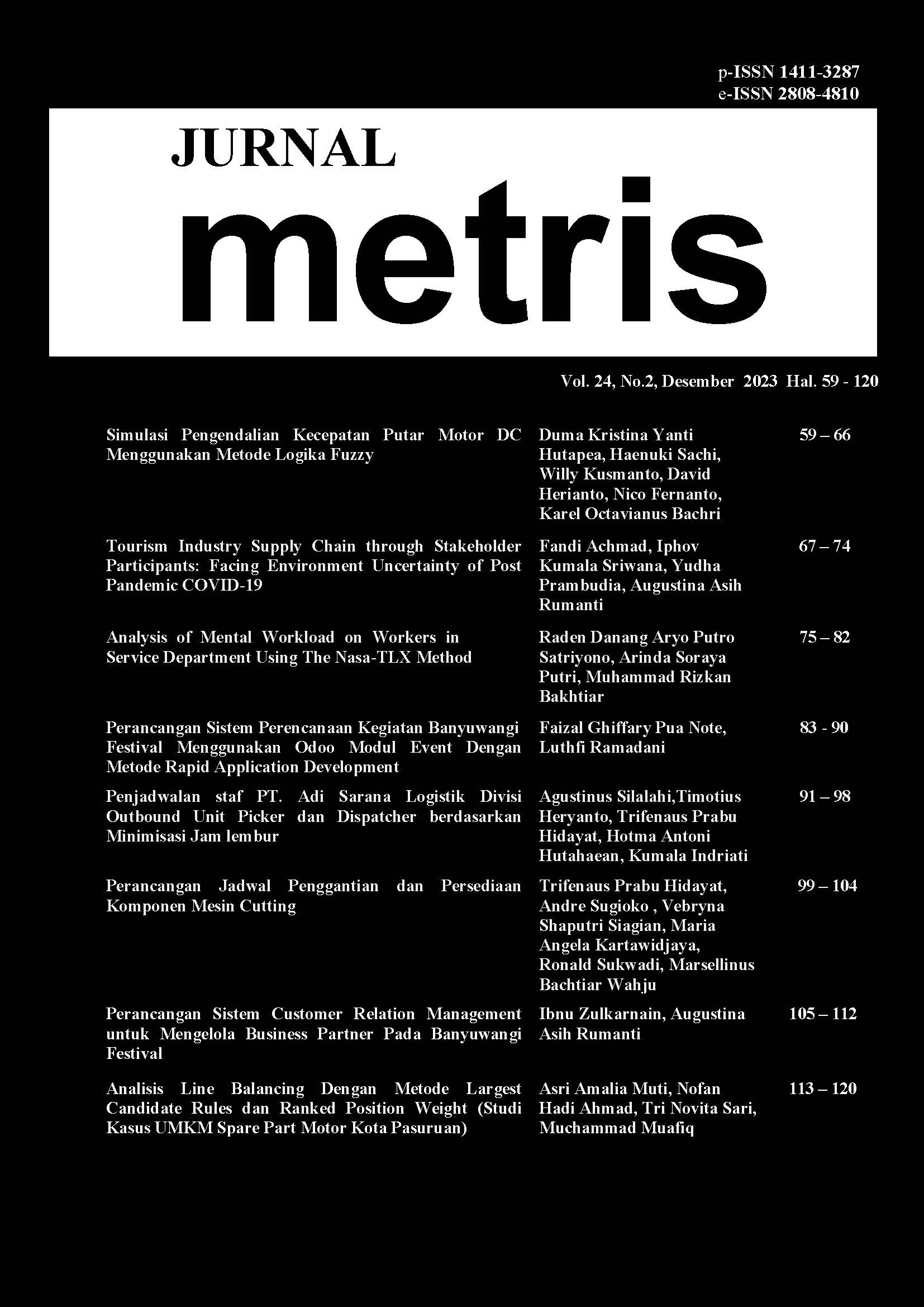Analisis Line Balancing Dengan Metode Largest Candidate Rules dan Ranked Position Weight (Studi Kasus UMKM Spare Part Motor Kota Pasuruan)
DOI:
https://doi.org/10.25170/metris.v24i02.4380Keywords:
Line Balancing, Ranged Position Wight (RPW), Largest Candidate Rule (LCR), bostep, underbone, flange, comparative researchAbstract
CV. XYZ produces motor spare parts from various types of metal, spare parts that are often ordered by customers include bostep, underbone, flange and many more variations of motor spare part products that are produced. The data shows the effectiveness of the production of CV. XYZ in 2021 which is on average 100%, this proves that the achievement of production against the production plan cannot be achieved 100%. So there is often an imbalance in the production line. The purpose of this study was to determine the highest efficiency, lowest balance delay and optimal number of workstations from the production line resulting from the two methods, namely Ranged Position Wight (RPW) and Largest Candidate Rule. The type of research used in this research is comparative research. By comparing the percentage of efficiency, balance delay and number of workstations from the two methods, namely Ranged Position Wight (RPW) and Largest Candidate Rule. The data shows that the largest candidate rule method has an efficiency percentage of 107% for bostep, 85% for underbone and 94% for flange respectively. Then the smallest resulting balance delay is also generated from the production line design using the largest candidate rule method with 0.6 minutes each for bostep, 2.4 minutes for underbone and 4.3 minutes for flange. Besides that, the design of workstations using the largest candidate rule method, 2 workstations each for the bostep, 2 workstations for the underbone and 3 work stations for the flange..












